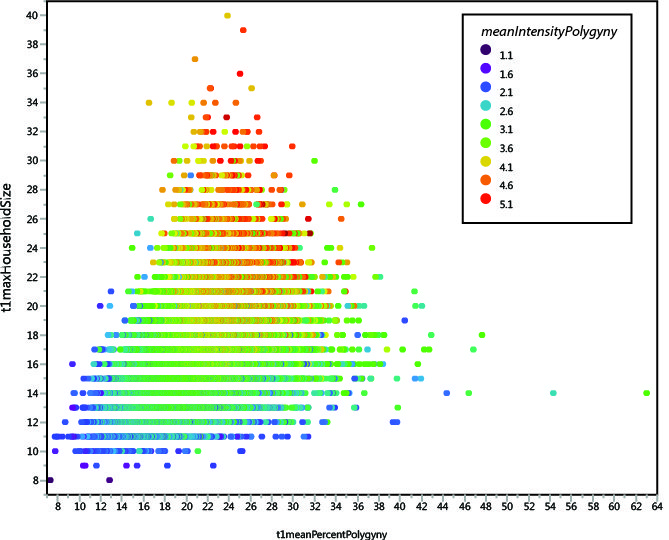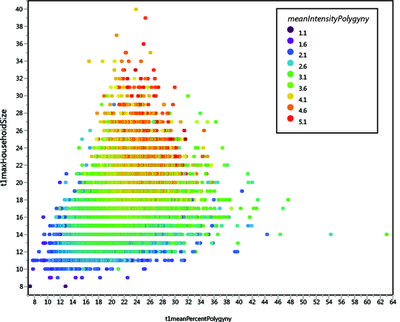ForagerNet3_Demography_V3 1.0.0
The FN3D_V3 model has three main levels: person, household, and system. Inter-related person- and household-level methods represent birth, death, and the creation/dissolution of male-female pair bonds (note: the terms “pair bond” and “marriage” are used inter-changeably in this description and denote the same behavior in the model). These methods and their inter-relationships were informed by data from ethnographic hunter-gatherers.
Many parameters in the model are continuously variable, allowing the model to be used to “sweep” through a range of values and observe how differences in parameters are related to model behavior. The dependency ratio (the ratio of consumers to producers in a household) is a key variable in many economic decisions embedded in the methods.
This model is not intended to represent all details of any particular hunter-gatherer system. The exclusion of extraneous detail is a purposeful strategy to aid in constructing a model whose structure and behavior are understandable. The representations in the model are generic and broadly applicable to a variety of hunter-gatherer systems.
FN3D_V3 is an altered version of the FN3D_V2 model described by White (2014).
FN3D_V3 was built using Repast Simphony.
The documentation provides (1) a description of the representations of time and the entities (persons, households, social links) in the model; (2) a brief overview of the major groups of methods in the model (pair bond, reproduction, and mortality); (3) model-level variables, parameters, and lists; and (4) a detailed description of the “rules” and the operations of the model with specific numeric reference to sections of the code.

